National Grandparents Week Kōrero
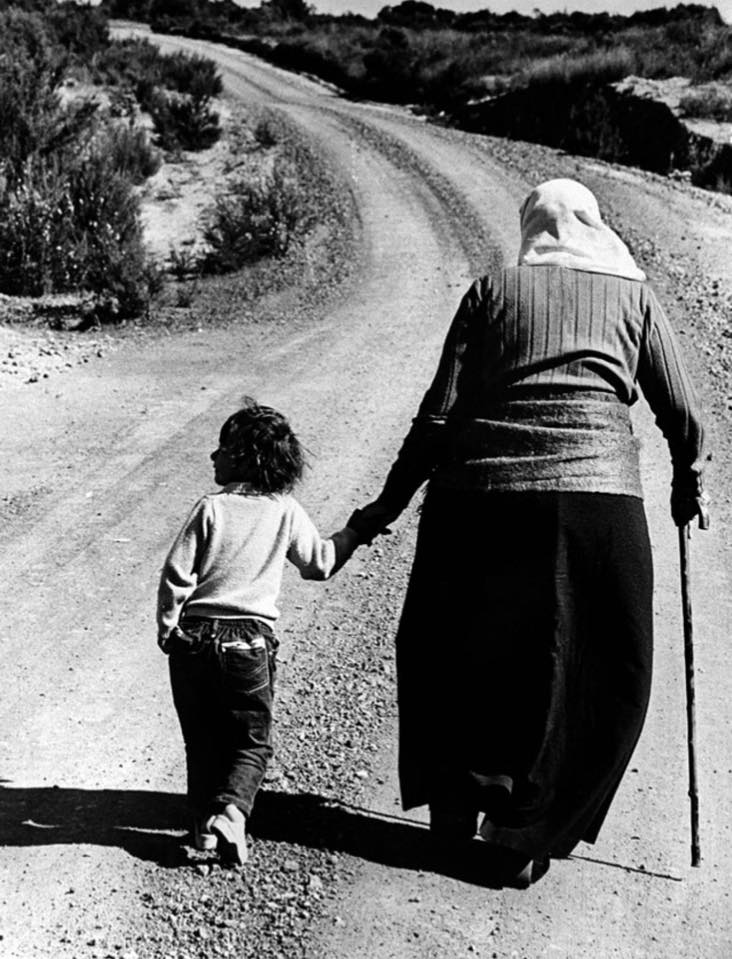
By Moana Wereta and Jessica Worchel
In acknowledgement of Grandparent’s week (27 October to 1 November 2022), Play Aotearoa would like to share pūrākau (story) and whakataukī (proverbs) that demonstrate the powerful connection between mokopuna (grandchildren) and tūpuna as it relates to te ao Māori (Māori worldview) (1).
The Ties that Bind: Mokopuna and Tūpuna
The bond between mokopuna and tūpuna is solidified in the kupu (words) describing the concepts. Darren Rewi shares that, “Moko is the facial tattoo, our trademark we wear. Puna is a spring or pool of water within which we see our reflection. Therefore, mokopuna is a reflection of ourselves (2).” Before colonisation, Māori parenting took place within the wider whānau (family unit). Tūpuna were typically responsible for the day-to-day care of their mokopuna and were entrusted with passing on ancestral knowledge while the parents tended to important mahi (work) that required more physical vigour. These practices have continued after colonisation, but have been greatly altered due to the influence of the nuclear-style, European family structure and the pressures of Western society.
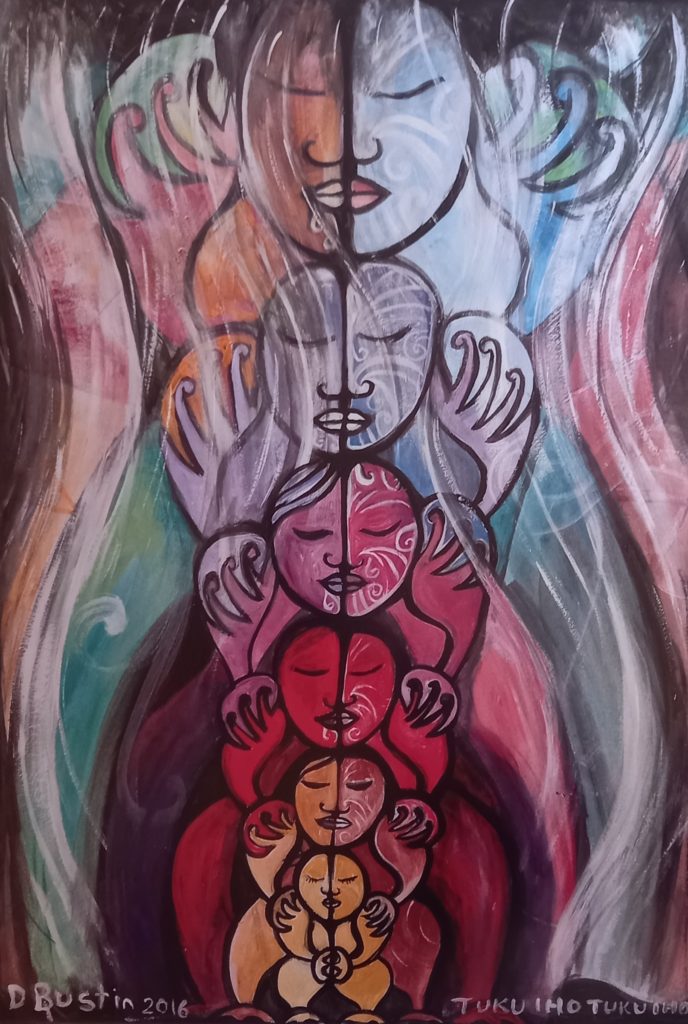
Rangimārie Te Turuki Arikirangi Rose Pere, a revered educationalist, spiritual leader, Māori language advocate, academic, and conservationist shared the following saying demonstrating the strong ties between mokopuna and tūpuna:
He taonga te mokopuna, ka noho mai hoki te mokopuna hei puna mo te tipuna ka whakaaro tātou tātou ka noho mai te mokopuna hei tā moko mo te tipuna anā he tino taonga rā tōna. He mokopuna rā tātou, he mokopuna anā hoki ngā tipuna.
This has been translated as, “A grandchild is very precious, a fountain for ancestral knowledge and an everlasting reflection of those who have gone before. We are all grandchildren as are our ancestors (3).”
The following whakataukī further demonstrates this concept. He Tupuna he mokopuna. Mā wai i whakakī i ngā whawharua o ngā mātua Tupuna? Mā ā tātou mokopuna! He mokopuna he Tupuna. Cameron, Pihama, Leatherby, and Cameron (2013) explain that “this whakataukī draws us to the essence of the whakapapa relationship between generations. It asserts that we are all mokopuna and we are all tupuna. The mokopuna will in future generations take the place of the tupuna. All grandchildren in time become grandparents. Each generation links through whakapapa to each other and we are a reflection and continuance of our ancestral lines (4).”
The Harakeke Metaphor
A beautiful description of te ao Māori that further demonstrates these connections comes through the metaphor of the harakeke plant as whānau. The rito (new shoot) is the baby or child. It is protectively surrounded by the awhi rito (parent fronds or mātua) who sit immediately next to the rito and the outside leaves who represent the tūpuna (grandparents and ancestors). We see the importance of the relationship between the child, parent, and grandparent in this representation of whānau. The mokopuna are nurtured and protected by the surrounding rau (fronds) whose role is to nourish – physically, mentally, spiritually, and emotionally – the tamariki (children). As the older rau die, they return to the roots of the harakeke to nourish future generations. As the plant grows, the young rau take up their position surrounding the rito and take on the role of awhi rito to the new growth, similarly to how our tamariki grow into matua and then tupuna. Each has a role to play in ensuring the health of the whānau, and this is done by staying close together as a unit and supporting one another in the journey of life.
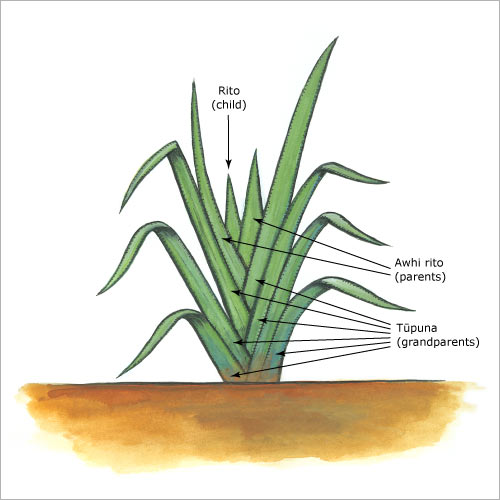
The individual harakeke is then connected to the pā harakeke (a large grouping of harakeke). Ange Watson explains that:
Pā Harakeke as a philosophy is about strengthening the whānau at the centre— the baby (rito) and the parents (awhi rito). The outer fronds (tūpuna) provide protection, shelter and care for the inner fronds. Pā Harakeke is about protection of our most vulnerable, whānau and collective strength, connection to the whenua and to Papatūānuku, our connection to whānau, hapū and iwi, and our connection to the past, the present and the future. Pā Harakeke acknowledges the role and responsibilities of others—the tūpuna (grandparents) in helping to strengthen the whānau—it is about developing community and inter-generational roles and support. It is about whakapapa and protecting whakapapa. It is about regenerating generations. It is about valuing children as a taonga and supporting parents to be the best parents they can by keeping the rito as the focus. It is about growing strong, healthy and flourishing whānau and is a natural fit when working with whānau (5).
Pūrākau of Whaitiri, Tāwhaki, and Kairihi
Many pūrākau speak to the special relationship of mokopuna and tūpuna. The pūrākau of Whaitiri, a female atua and the personification of thunder, speaks to the connection between her and her mokopuna. Whaitiri marries Kaitangata and gives birth to a son named Hema. Hema would father Whaitiri’s mokopuna, Tāwhaki and Kairihi, making Whaitiri a tupuna wahine (grandmother).
In one version of the pūrākau of Whaitiri, she becomes blind after eating ika (fish) infused with tapu (sacredness) that was served to her by Kaitangata as revenge for committing cruel acts against his whānau. It is her mokopuna who free her from blindness. One day, Tāwhaki and Kairihi set off to climb into the realm of Rangi (sky father, heavens). Whaitiri sits blindly at the foot of the ascent to the sky guarding the vines and counting kūmara (sweet potato) and taro, her main food source. Tāwhaki and Kairihi decide to play a trick on their tupuna and remove some kūmara and taro to throw off her count. Once she realises what is happening, they reveal themselves to her and are able to restore her sight. In return, she advises them of the best way to climb into the heavens. Kairihi takes off first climbing the aka taepa (hanging vine) which are unstable. He is blown by the winds and falls to his death. Tāwhaki climbs the aka matua (parent vine) while reciting karakia (chants) and is successful in reaching the tenth rangi.
In this pūrākau we see the playful mokopuna tricking their tupuna, but then helping to revive her sight. Their tupuna then offers guidance on how to proceed with their difficult journey. As you celebrate Grandparents Week, what pūrākau, whakataukī, and other lessons might you have to share on the role and bond of mokopuna and tūpuna? How do these bonds and relationships strengthen our whānua and hāpori (community)? What adventures have you had with your mokopuna or tūpuna, and how has tākaro (play) helped you to pass on the traditions of your ancestors?
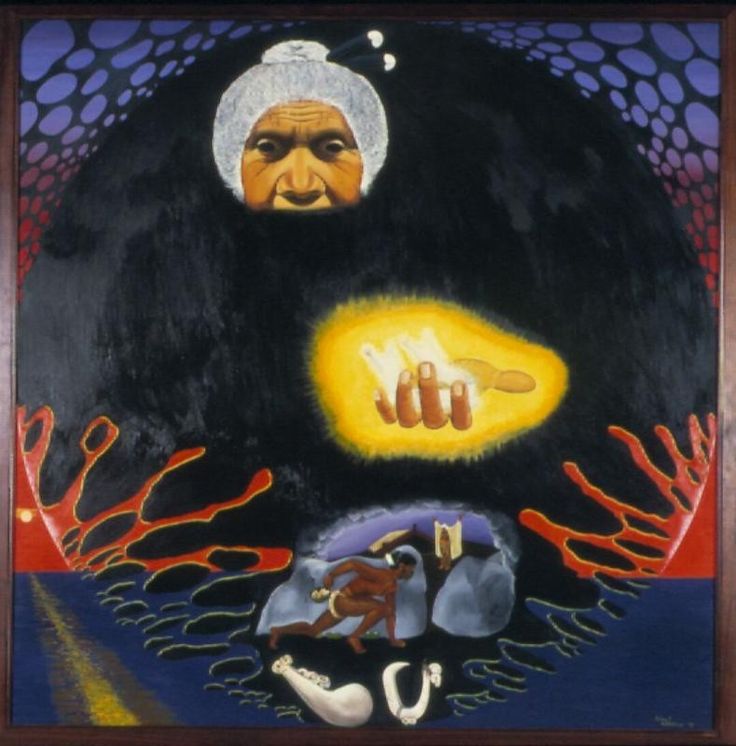
Here is a selection of pūrākau speaking to the relationship between Māui and his tūpuna. A reminder that pūrākau differ from place to place, iwi to iwi, hapū to hapū, and whānau to whānau. Be sure to look into the whakapapa (history, genealogy) of the pūrākau as you explore. And, there is no better way to receive a pūrākau than from the tūpuna who were gifted and entrusted with passing it on. If you have access and can request of this in a respectful manner, seek out the kaumātua (elders) of your place to hear a firsthand account.
- Mahuika and Māui
- The jawbone of Muriranga-whenua
- Māui slowing the sun
- Māui fishing up Te-Ika-a-Māui
- Tamanui-ki-te-rangi and Māui
Footnotes
- Note there are many kupu (words) that denote the role of a grandparent or elder. Here are a few common ones (note that different dialects or regions may have their own kupu): Tāua – grandmother, old woman, grandparent, old man; Kuia – elderly woman, grandmother, female elder; Pōua – grandfather; Koroua – elderly man, old man, elder, grandfather, granduncle; Koro – elderly man, grandfather, grandad, grandpa – term of address to an older man; Tīpuna or Tūpuna – grandparents; Tupuna/tipuna wahine – female ancestor, grandmother, great grandmother; Tupuna /tipuna tāne – male ancestor, grandfather, great grandfather, forefather; Kaumātua – elder, elderly man, elderly woman, old man – a person of status within the whānau.
- Meaning and narrative: A deeper understanding of te reo Māori by Darren Rewi https://taketuia.com/meaning-and-narrative-understanding-te-reo-maori/
- Cameron, N., Pihama, L., Leatherby, R., & Cameron, A. He Mokopuna He Tupuna: Investigating Māori Views of Childrearing Amongst Iwi in Taranaki. A Report by Tu Tama Wahine o Taranaki Inc to the Lottery Community Sector Research Fund. December 2013. P. 4. http://www.communityresearch.org.nz/wp-content/uploads/formidable/Final-Research-Report-He-Mokopuna-He-Tupuna-Investigating-Traditional-Maori-Views-of-Childrearing-Amongst-Iwi-Within-Taranaki.pdf
- Ibid.
- Watson, A. Pā Harakeke as a research model of practice. Aotearoa New Zealand Social Work. 32(3), 30–42. P. 32. https://anzswjournal.nz/anzsw/article/view/767
IPA Aotearoa NZ is a branch of the International Play Association (IPA World) and is a non-governmental organisation that exists to promote the child’s right to play, their way.
